18 Ways to Copy Files Faster in Windows
The slow transfer or copying of files in Windows is not a new issue. Many users complain about the low speed of transferring files to other folders or Flash and external hard drives, especially if you have large files that are supposed to take minutes to move.
The low speed of copying files in Windows has many reasons, which are hard disk failure, file system errors, old drivers, and disk fragmentation among the most important of them, with methods such as deactivating the Auto-Tuning feature, updating Windows, and Using file copy tools, you can increase the speed of transferring files.
So, if you are tired of the slow speed of file copying in Windows and you would like to do simple tasks such as file copying and not spend looking at the ‘Copying Items’ window in Windows, we know great ways to use them. You can go through this tedious process faster.
If you plan to buy a Windows virtual server and want to improve the speed of copying files on your Windows server, there is nothing to worry about. These methods can also be used for your Windows server.
How to quickly copy files in Windows
1. Check for file system errors
Before doing anything, it is better to check the status of the hard disk or external drive to discover and repair the errors that have slowed the speed of copying files. You can use the built-in Windows tool for this.
- Just right-click on the desired internal or external drive and select Properties.
- Select the Tool tab and click Check from the “Error-checking” section.
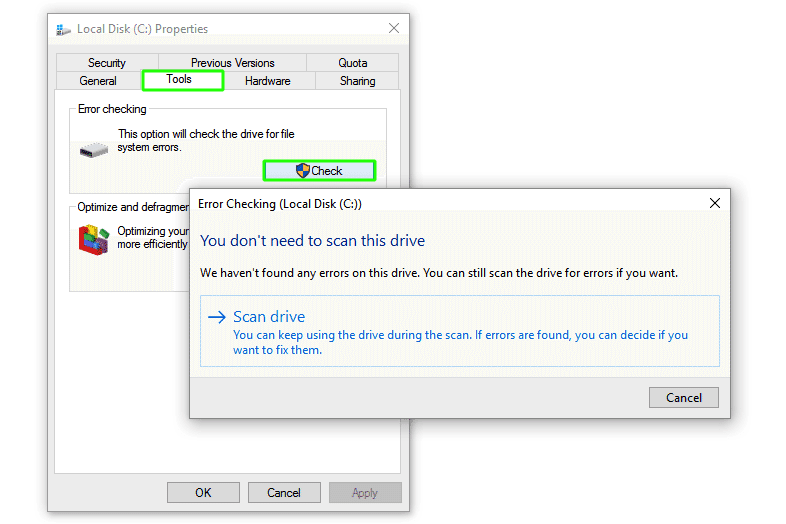
- Follow the instructions of the wizard to check and fix the errors.
2. Disable the Auto-Tuning feature
If you are transferring files between computers on the network and facing slow copying speed, turning off the Auto-Tuning feature can work for you. Although this feature is designed to transfer files more efficiently, if your network uses an old router or your firewall does not support this feature, its activation can slow down the file transfer speed in Windows.
To turn off the Auto-Tuning feature, follow the steps below:
- Click on Start and open CMD as Run as administrator.
- Run the following command:
netsh int tcp set global autotuninglevel=disabled
Next, transfer the files again and check if the transfer speed has increased.
Don’t forget to re-enable the Auto-Tuning feature after completing the file transfer process, for which you can use the following command:
netsh int tcp set global autotuninglevel=normal
3. Enable the Optimize Drives feature
This method works for many Windows users. Especially users who have upgraded their Windows 7 to Windows 10 and faced the low speed of copying files in Windows can use this method. This method optimizes and cleans disk space and moves files to parts of the disk with higher access speeds.
To activate this feature, follow the steps below:
- Press Win + R and type services. msc and press Enter.
- Find Optimize drives, then right-click on it and select Properties.
- Change the Start type to Automatic and click on Start in the lower part of Service status.
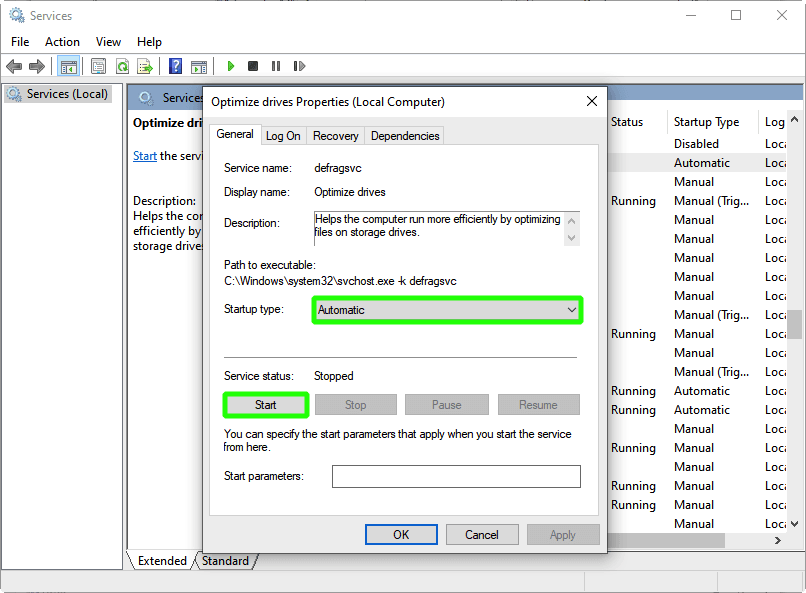
Click Apply and then OK.
4. Disable the Real-Time Protection feature
Some antiviruses, such as Windows Defender itself, scan files in real-time during an operation such as downloading or copying, and this scanning process causes a decrease in the speed of copying files in Windows. But this scan makes your system resistant to malware and other security threats and not affected. Therefore, the best way is to turn off the Real-Time Protection feature while transferring files temporarily and then re-enable this feature when you are done.
To turn off this feature, follow the steps below:
- Click Start and search for Windows Security.
- Select the Virus & threat protection tab and click on Manage Settings.
- Turn off the Real-time protection feature and test the speed of copying files in Windows again.
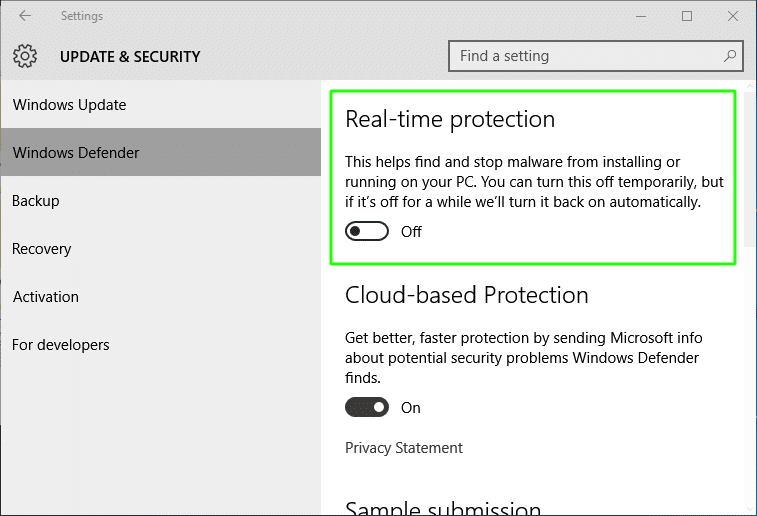
5. Disable the Drive Indexing feature
Although this feature helps to increase the speed and accuracy of access by indexing the files in the system, the activation of this feature leads to a decrease in the rate of file copying in Windows because the system checks the index database before copying the files. The files are accessed and fit, which also slows down copying.
To turn off this feature, follow the steps below:
- Right-click on the desired drive and select properties.
- Click on the general tab and uncheck the Allow files on this drive to have contents indexed in addition to the file properties option.

Click Apply and then OK to save these changes.
Of course, if you spend a lot of time searching for files and the speed of accessing the desired files is essential to you, activate this feature.
6. Update the USB drivers
USB driver is the interface between your system and USB devices; updating this driver can help improve its speed and performance for copying files in Windows. A new version of the USB driver could include improvements in file transfer speed and support that could solve your problem.
Follow the steps below to update the USB driver:
- Press Win + R and type devmgmt. msc and press Enter.
- Find Universal Serial Bus Controller drivers and right-click on them.
- Then click on Update driver.
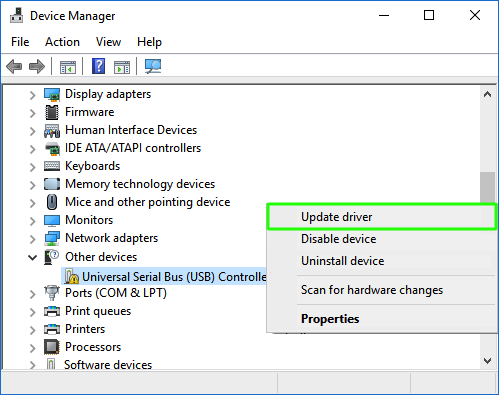
7. Disable Large Send Offload
The Large Send Offload feature is designed to improve network performance and reduce system overhead, but it llows background programs to consume much network bandwidth. So, if your network has a low speed and you are considering increasing the rate of transferring files in the network space, this method can be helpful.
To turn off the LSO feature, follow these steps:
- Click Start and search for and open Device Manager.
- Click on the arrow next to Network adapters to open the list of adapters.
- Right-click on your network card and select Properties.
- Select Largely Send Offload V2 (IPV4) from the Advanced tab and set it to Disabled.
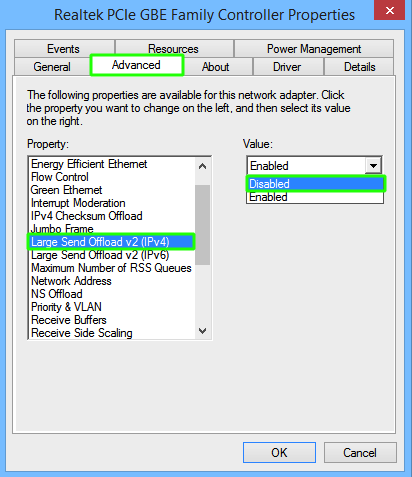
- Do this for Large Send Offload V2 (IPv6) as well.
- Click OK to save these changes.
- Finally, restart your system and check the speed of file transfer over the network again.
8. Disable RDC
Remote Differential Compression is one of the essential features of Windows that allows users to reduce the size of files they share on the network and thus increase the copying speed. But in some cases, turning off this feature can improve the speed of copying files. Significantly when the network has limited bandwidth, reducing the amount of data can increase the speed of copying files in Windows.
To turn off this feature, follow these steps:
- Click on Start and search for and open Turn Windows features on or off.
- Scroll down and uncheck Remote Differential Compression API support.
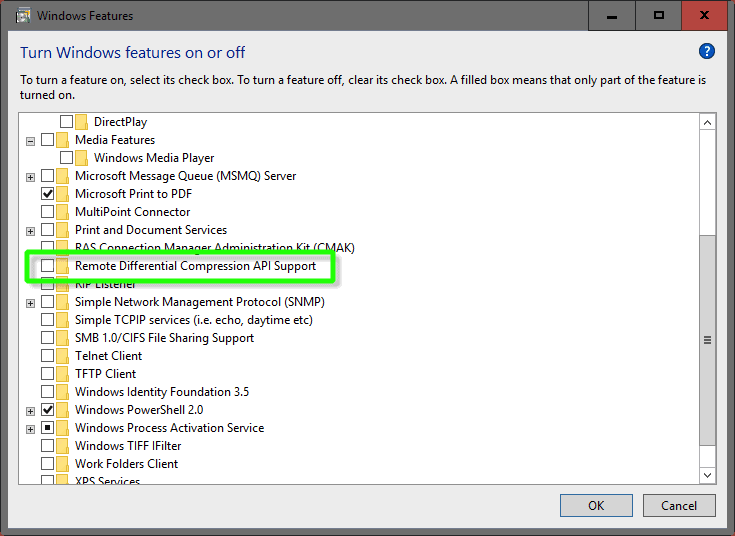
Click OK to save these changes.
9. Use another USB port
Sometimes, the bandwidth of one USB port is higher than the other USB port, and using the port with higher bandwidth can help improve the speed of copying files in Windows.
For example, the USB 3.0 port is an improved version of the USB port, which can affect the speed of copying files in Windows. Due to the support of higher transfer speed and larger files, this port can transfer files faster. The rate of copying files using the USB 3.0 port can reach up to 5 Gbps, which is much higher than the speed of the USB 2.0 and USB 1.1 ports.
10. Format the USB flash drive
According to reports, some users have improved the speed of copying files in Windows by changing their flash drive format to NTFS. In this way, if your USB drive format is FAT32 and you change it to NTFS, you will benefit from faster copying speed and more security features such as encryption and limited access to files.
Of course, note that if you change the Format of your flash drive from FAT32 to NTFS, all the files on the USB flash drive will be deleted, so make a backup of all your important data before changing the Format.
To change the Format of your USB flash drive, follow the steps below:
- Open This PC or File Explorer.
- Right-click on the USB flash drive and select Format.
- Select NTFS as the Format and click Start.
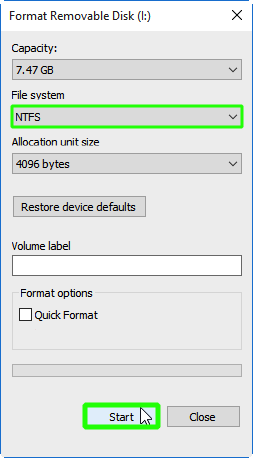
Wait for this process to finish.
11. Change the drive removal policy
Each external USB device provides you with two options, Quick removal, and Better performance, which you can choose according to your needs. Quick removal prevents caching and is suitable for small-size USB flash drives. Better performance also allocates time for caching and is ideal for high-volume flash drivers. In general, use Better Performance if you intend to transfer large files and like to do it at a higher speed.
To activate Better performance, follow the steps below:
- Connect the USB flash drive to the system.
- Right-click on Start and open Device Manager.
- Right-click the arrow next to Disk drives to open the list of industries.
- Right-click on the flash drive and select Properties.
- From the Policies tab, enable Better Performance instead of Quick Removal.
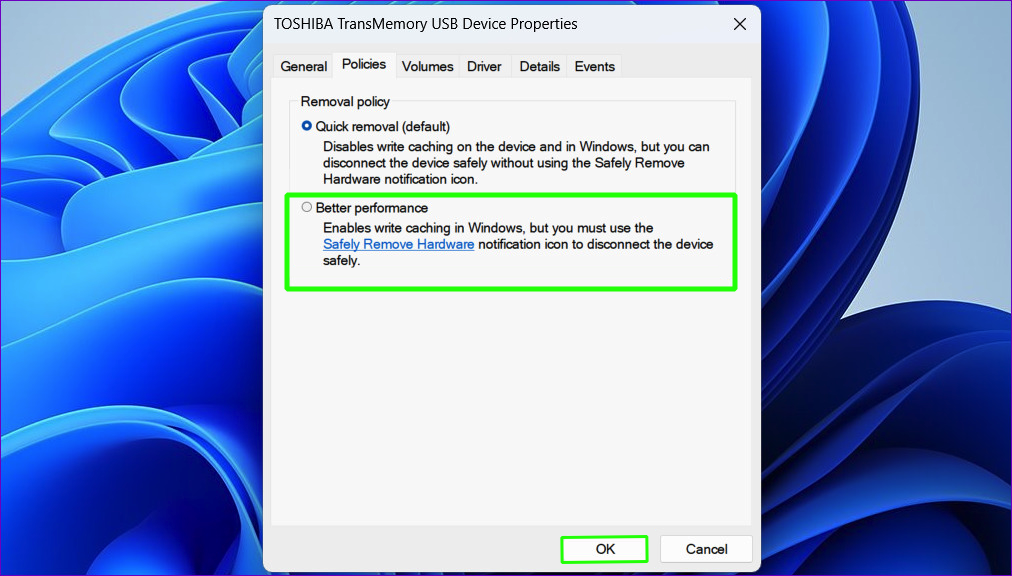
12. Disable the Windows search feature to increase the speed of copying files
Windows search is one of the valuable features of Windows, but at the same time, it consumes a lot of resources, and this consumption of resources can reduce the speed of transferring files. By turning off this feature, you can free up system resources and improve the speed of copying files in Windows.
To turn off this feature, follow the steps below:
- Click Start and search for and open Services.
- Double-click on Windows search.
- Click Stop to stop this service.
Of course, if you want to prevent this service from running when you turn on the system, you can select the disabled option from the startup type section.
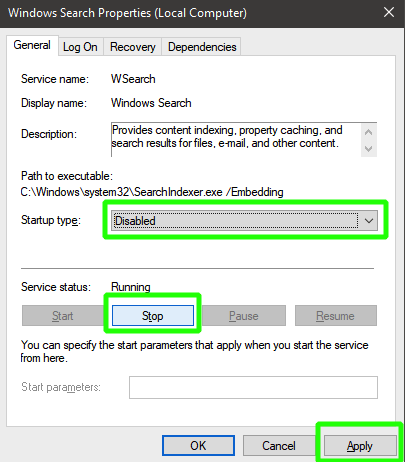
After you apply these changes, check if the file transfer speed has improved.
13. Use the Disk Cleanup tool
The tool helps improve copying speed by removing temporary, old, and unnecessary complex disk files. In this way, the more space available for copying files on the hard disk, the faster the interaction with the hard disk will be.
To use this tool, follow the steps below:
- Click the Win + S combination button and type disk to open the Disk Cleanup tool in the search result.
- Select system partition and click OK.
- Click on Clean system files and select system partition again.
- After the calculations are finished, check all the options and click OK.
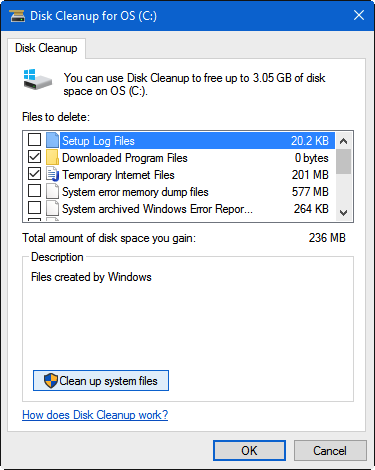
14. Improve the performance of your system hard disk to increase the speed of copying files
Checking the hard disk and improving its performance is one method that effectively increases the speed of copying files in Windows. For this, you can use tools like Defraggler and HD Tune.
15. Compress your files
By compressing files, their size is significantly reduced, and by reducing the size of files, the time required to copy them is also reduced.
Of course, the compression process also requires time and processing, which is added to the time needed to copy files from Windows, but the time necessary to compress large files, compared to the time required to copy files with The actual size, is much smaller.
16. Change your hard drive to SSD
SSD hard drive has a higher reading and writing speed, and if copying and transferring files quickly is very important to you, you can change your hard drive to SSD.
Of course, to achieve the highest performance when using this hard disk, you must also optimize your device and file systems so that a series of errors do not cause its potential to drop.
17. Update your Windows
New updates applied by Microsoft can affect the speed and efficiency of the system and the performance of external storage devices such as USB flash drives. For example, one problem that reduces the rate of copying files in Windows is the existence of incomplete updates in Windows, which you can fix by installing new and complete updates.
You can use the following methods to update Windows:
1. Automatic update: In this method, Windows automatically checks for new updates, and if an update is not installed in your system, it automatically downloads and installs it.
To activate this feature, follow the steps below:
Open System Settings and go to Update & Security section.
In the Windows Update section, on advanced options, enable Automatic Updates.

2. Manual update: In this method, you must manually download and install the new updates yourself.
So follow the steps below:
Open System Settings and go to Update & Security section.
Click on check_for_updates and download and install it if there is a new update.
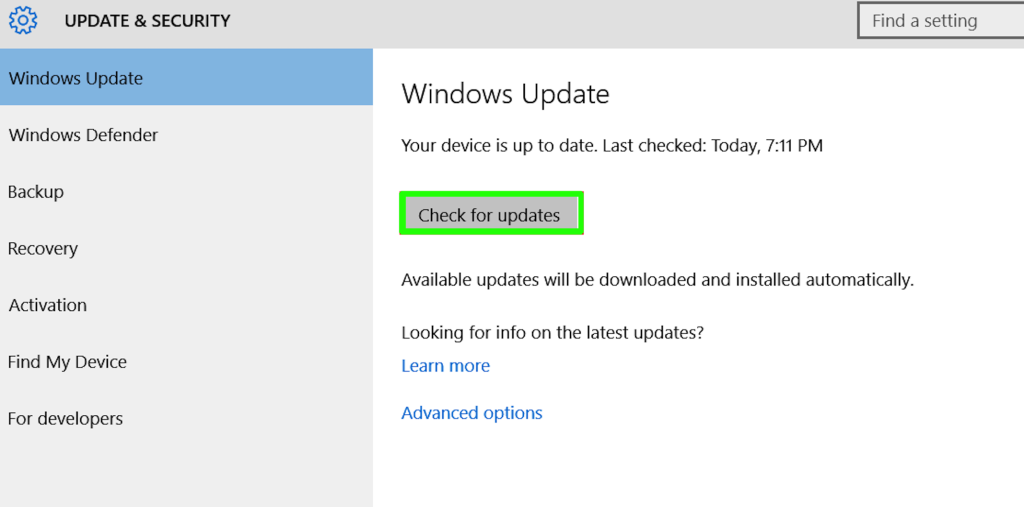
Note that to install updates, you must use a stable and high-speed internet connection so that downloading and installing them will not be a problem.
18. Use special applications for copying files in Windows
After you have tried all the above system settings but still don’t get the desired result, you can use other tools designed for this task. In addition to improving the speed of copying files in Windows, these tools also provide you with a series of useful features that you can use to improve the quality of your work.
Among the best tools for copying files in Windows, the following can be mentioned:
TeraCopy: This application is used to copy and move files in Windows and offers features such as advanced error management, file priority setting, etc.
FastCopy: This application can also improve the speed of copying files, support large files, and the ability to choose a language are other features of this tool.
File Fisher: This tool is one of the fastest portable file-copying tools in Windows, and one of the best features of File Fisher is that you don’t need to download the program and can easily drag and run it on your desktop. This application has powerful filters that help you transfer only specific files.
Any of these methods can solve your problem. It would help if you tried the appropriate techniques based on your needs and facilities to reach your desired speed.
Conclusion
Many reasons can cause a decrease in the speed of copying files in Windows. Each method presented in this article has proven effects, but their intensity depends on your system’s hardware specifications. Try any of the methods based on your needs to reach your desired speed finally.
Thank you for staying with us until the end of the article. We hope that reading this article was helpful for you. If you have any questions or requests and need guidance, you can contact us by registering your opinion so we can answer you as soon as possible.
